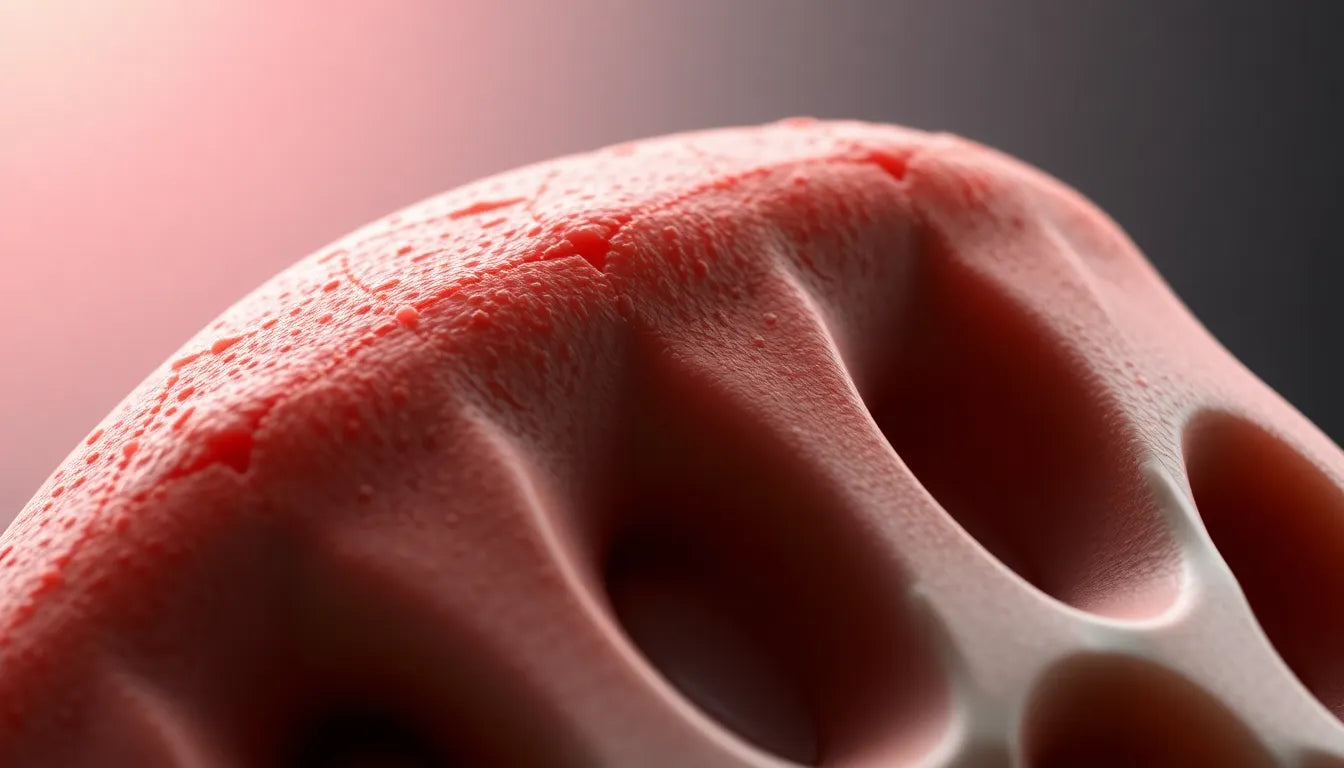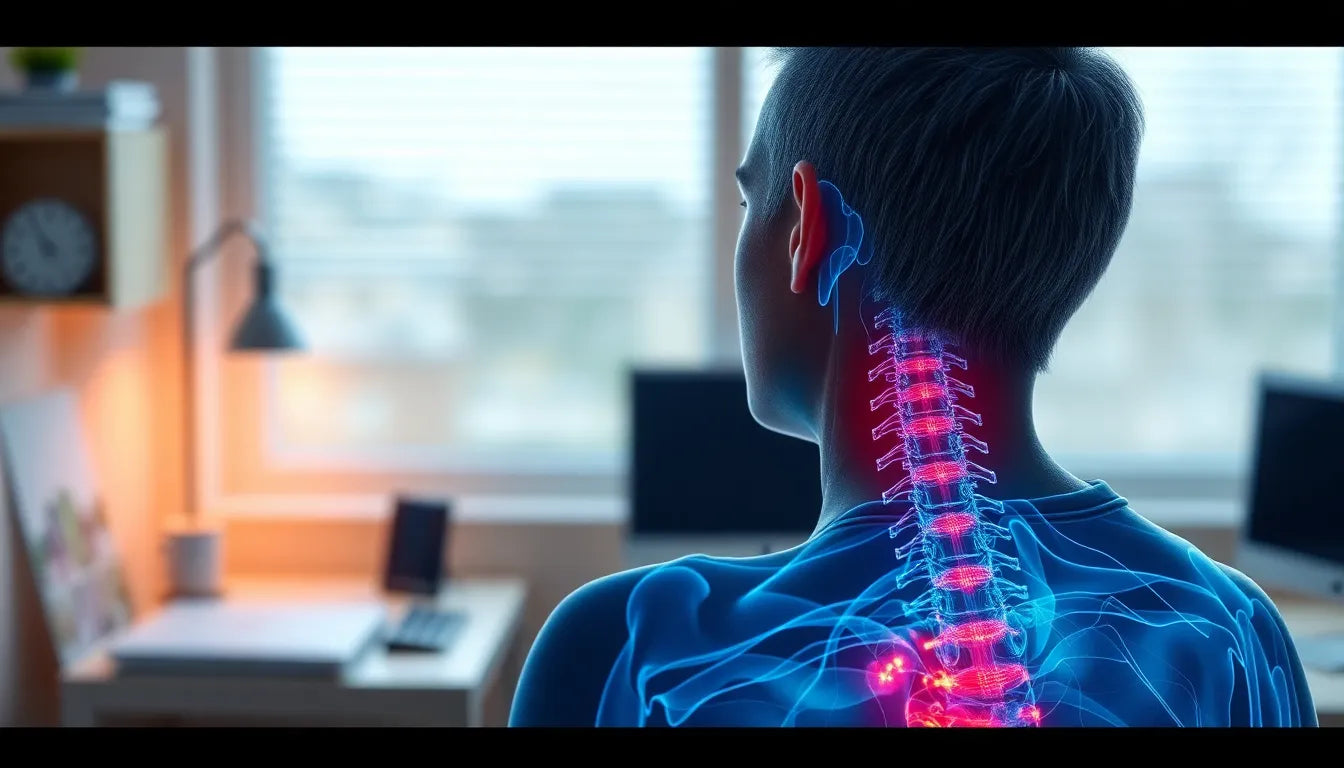When it comes to understanding how your body heals, the journey of a herniated disc reabsorption is a fascinating example of natural recovery. A herniated disc, often referred to as a slipped or ruptured disc, occurs when the soft inner gel of a spinal disc protrudes through its outer layer. This condition can lead to pain, numbness, or weakness, particularly when the herniated material presses on nearby nerves. Despite the discomfort it causes, the body has a remarkable ability to heal itself, and in many cases, a herniated disc can reabsorb naturally over time.
the reabsorption process: a key to recovery
The concept of disc reabsorption is central to the recovery process. Reabsorption refers to the body's ability to gradually break down and absorb the herniated disc material. This natural healing process is crucial because it can lead to a reduction in symptoms and, eventually, a return to normal function. However, the timeline for reabsorption can vary significantly from person to person, which is a common concern among patients dealing with this condition.
understanding the timeline for reabsorption
Knowing the timeline for herniated disc reabsorption is important for several reasons. Firstly, it helps manage expectations, allowing patients to understand that recovery is often a gradual process. This knowledge can reduce anxiety and provide reassurance that improvement is likely, even if it takes time. Secondly, understanding the timeline can guide individuals in making informed decisions about their treatment options and lifestyle adjustments to support recovery.
The goal of this blog is to provide a comprehensive overview of the reabsorption journey. By exploring the factors that influence healing and the typical timelines involved, we aim to empower you with the information needed to navigate your recovery with confidence. Whether you're dealing with a herniated disc yourself or supporting someone who is, understanding the body's natural healing capabilities can be both enlightening and encouraging.
reabsorption timeline and statistics
Understanding the timeline for herniated disc reabsorption is essential for setting realistic expectations about recovery. Statistically, up to 70% of herniated discs reabsorb within six months when treated with conservative methods. These methods include physical therapy, lifestyle changes, and sometimes medication. However, the journey to full reabsorption can extend beyond six months, especially in cases where the herniation is severe. Some individuals may experience a complete recovery within several months to a year or more, depending on various factors.
stages of recovery
The recovery from a herniated disc typically unfolds in stages. Initially, patients often notice a reduction in symptoms within two to six weeks. This short-term improvement is usually due to decreased inflammation and the body's initial healing response. By six to twelve weeks, the majority of individuals experience significant pain relief and increased mobility. For most, full disc reabsorption and symptom resolution occur within six months. However, it's important to remember that recovery timelines can vary, and some may continue to see improvements beyond this period.
factors influencing reabsorption
The rate at which a herniated disc reabsorbs can be influenced by several factors:
- Severity and location of herniation: Larger, extruded herniations might reabsorb more quickly than smaller, contained ones. Additionally, the location of the herniation along the spine can impact the reabsorption timeline.
- Individual healing capacity: Factors such as age, overall health, and whether nerves are involved can significantly affect how quickly the body can heal. Younger individuals or those in good health may experience faster recovery.
- Treatment approach: While conservative management is effective for many, the choice of treatment can influence recovery. Surgical intervention is typically reserved for cases where conservative methods do not provide sufficient relief or when severe neurological symptoms are present.
role of conservative management
Conservative management is often the preferred approach for treating herniated discs. This method focuses on physical therapy, activity modification, and symptom management to promote natural healing. Physical therapy plays a crucial role by strengthening the muscles around the spine, improving flexibility, and reducing pressure on the affected disc. Activity modification, such as avoiding heavy lifting and practicing good posture, helps prevent further injury and supports recovery. Symptom management, including pain relief through medication or other therapies, allows individuals to maintain function and comfort during the healing process.
In summary, while the timeline for herniated disc reabsorption can vary, understanding the stages and factors involved can help manage expectations and guide treatment decisions. Most individuals can expect significant improvements within six months, with full recovery potentially taking longer, especially in severe cases. By focusing on conservative management and supporting the body's natural healing processes, many people can achieve a successful recovery.
Natural healing process of a herniated disc
The body's natural healing mechanisms for a herniated disc are both complex and remarkable. When a disc herniates, the body's immune system recognizes the extruded material as foreign and initiates an inflammatory response. This response helps to break down the herniated material, allowing the body to gradually reabsorb it. Over time, this process can reduce the size of the herniation and alleviate symptoms. However, it is important to note that recovery is gradual and may include periods of symptom flare-ups.
Encouraging activity and recovery
Returning to activity is a crucial part of the recovery journey for those with a herniated disc. Gradually increasing exercise intensity, under the guidance of healthcare professionals, can promote healing and strengthen the muscles that support the spine. It is essential to listen to your body and adjust activities as needed to avoid overexertion. Activities such as walking, swimming, and gentle stretching can be particularly beneficial in maintaining mobility and supporting recovery.
When to seek medical advice
While many individuals with a herniated disc can recover through conservative management, there are certain symptoms that warrant urgent medical attention. If you experience severe neurological symptoms such as significant weakness, loss of bowel or bladder control, or intense pain that does not improve with rest, it is important to seek medical advice promptly. These symptoms may indicate a more serious condition that requires immediate intervention.
Frequently Asked Questions
How long does it take for a herniated disc to reabsorb?
Typically, a herniated disc reabsorbs within six months with conservative treatment. However, full recovery can extend to a year or more, especially in severe cases.
What can I do to speed up the recovery process?
Engaging in physical therapy, maintaining a healthy lifestyle, and following medical advice are key strategies to support and potentially speed up recovery from a herniated disc.
Is surgery necessary for a herniated disc?
Surgery is generally not necessary for a herniated disc. Most cases are managed conservatively unless severe symptoms persist or worsen, in which case surgical intervention may be considered.
Can a herniated disc heal on its own?
Yes, a herniated disc can heal on its own over time. The body can naturally reabsorb the disc material, leading to symptom improvement and eventual recovery.
What are the signs of improvement?
Signs of improvement include reduced pain, increased mobility, and the ability to perform daily activities more comfortably. These indicators suggest that the body is successfully healing and adapting.
In conclusion, understanding the journey of a herniated disc reabsorption involves recognizing the body's natural healing capabilities and the factors that influence recovery. By focusing on conservative management and being mindful of symptoms, individuals can navigate their recovery with confidence and achieve a positive outcome.
Sources
- Physio-Pedia. "Herniated Disc."
- Spine MD. "How Long Does It Take for a Herniated Disc to Heal?"
- ADR Spine. "Herniated Disc Recovery Time."
- Barricaid. "Herniated Disc Reabsorption."
- HealthCentral. "Herniated Disc: Symptoms and Treatment."
- Dr. Kevin Pauza. "Herniated Disc Treatment."
- Hospital for Special Surgery (HSS). "Herniated Disc."


















